Creating Habits and Practices for Success
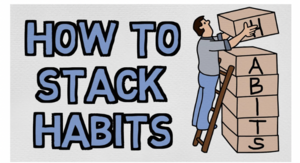
Instructions
NB: These slides on creating and building habits of success are from Module 1, so they are a re-cap (unless not used previously!
SLIDE XX: HABITS & PRACTICES FOR SUCCESS
In this session, we’re going to cover some important areas to help you transition from the program to continued growth and application. Firstly, we are going to do a quick re-cap of some important ideas and principles about habits:
- Anatomy of Habits
- The Power of Tiny Gains
- Three Rules
- BE-DO-GET
- Keys to Successful Habit Change
SLIDE X: CONNECTING PROGRAM OBJECTIVES TO INDIVIDUAL AND CORPORATE OBJECTIVES
SLIDE X: ANATOMY OF HABITS
- Habits are the small decisions you make and actions you perform every day
- Your life today is the sum of your habits
- Habits account for about 40% of our behaviours on any given day (Duke University)
SLIDE X: 1% RULE
● If we improve by 1% every day for a year, then we will be 37.78 x better.
● If we get worse by 1% every day for a year, then we will be .03 worse.
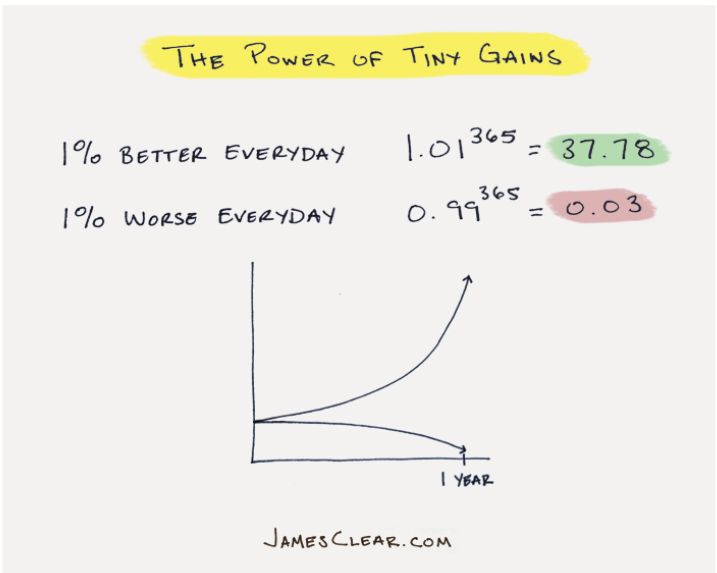
SLIDE X: THREE RULES
● Start with a version of the habit that is incredibly easy for you.
● Increase your habit every day.
● All sets must remain easy (break down total habit into easier pieces if needed).
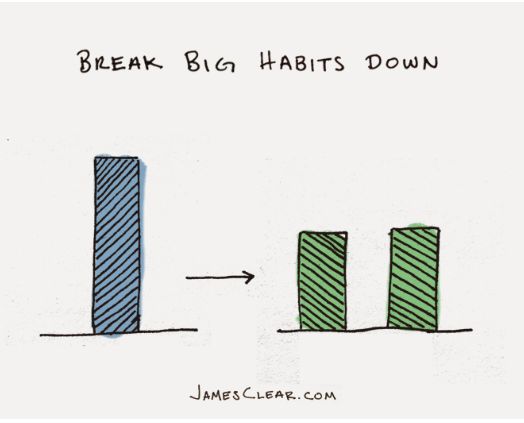
SLIDE X: HABIT STACKING
“One of the best ways to build a new habit is to identify a current habit you already do each day and then stack your new behavior on top. This is called habit stacking.” James Clear
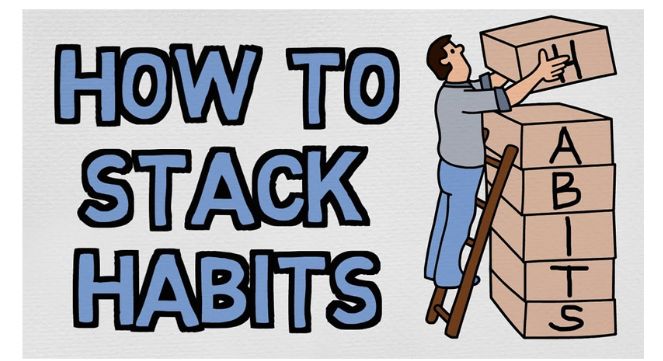
Habit Stacking Formula
After/Before [CURRENT HABIT], I will [NEW HABIT].
NB: Go in to as much or little theory as you see fit below
The Power of Synaptic Pruning
There is a phenomenon that happens as we age called synaptic pruning. Synapses are connections between the neurons in your brain. The basic idea is that your brain prunes away connections between neurons that don’t get used and builds up connections that get used more frequently.
For example, if you practice playing the piano for 10 years, then your brain will strengthen the connections between those musical neurons. The more you play, the stronger the connections become. Not only that, the connections become faster and more efficient each time you practice. As your brain builds stronger and faster connections between neurons, you can express your skills with more ease and expertise. It is a biological change that leads to skill development.
Meanwhile, someone else who has never played the piano is not strengthening those connections in their brain. As a result, the brain prunes away those unused connections and allocates energy toward building connections for other life skills.
This explains the difference between newborn brains and adult brains. Babies are born with brains that are like a blank canvas. Everything is a possibility, but they don’t have strong connections anywhere. The adults, however, have pruned away a good deal of their neurons, but they have very strong connections that support certain skills.
Now for the fun part. Let’s talk about how synaptic pruning plays an important role in building new habits.Synaptic pruning occurs with every habit you build. As we’ve covered, your brain builds a strong network of neurons to support your current behaviors. The more you do something, the stronger and more efficient the connection becomes.
You probably have very strong habits and connections that you take for granted each day. For example, your brain is probably very efficient at remembering to take a shower each morning or to brew your morning cup of coffee or to open the blinds when the sun rises … or thousands of other daily habits. You can take advantage of these strong connections to build new habits.
SLIDE X: HABIT STACKING (THE HOW)
How?
When it comes to building new habits, you can use the connectedness of behavior to your advantage. One of the best ways to build a new habit is to identify a current habit you already do each day and then stack your new behavior on top. This is called habit stacking.
Habit stacking is a special form of an implementation intention. Rather than pairing your new habit with a particular time and location, you pair it with a current habit. This method, which was created by BJ Fogg as part of his Tiny Habits program, can be used to design an obvious cue for nearly any habit.
Habit Stacking Examples
For example:
After I pour my cup of coffee each morning, I will meditate for one minute.
After I take off my work shoes, I will immediately change into my workout clothes.
After I sit down to dinner, I will say one thing I’m grateful for that happened today.
After I get into bed at night, I will give my partner a kiss.
After I put on my running shoes, I will text a friend or family member where I am running and how long it will take.
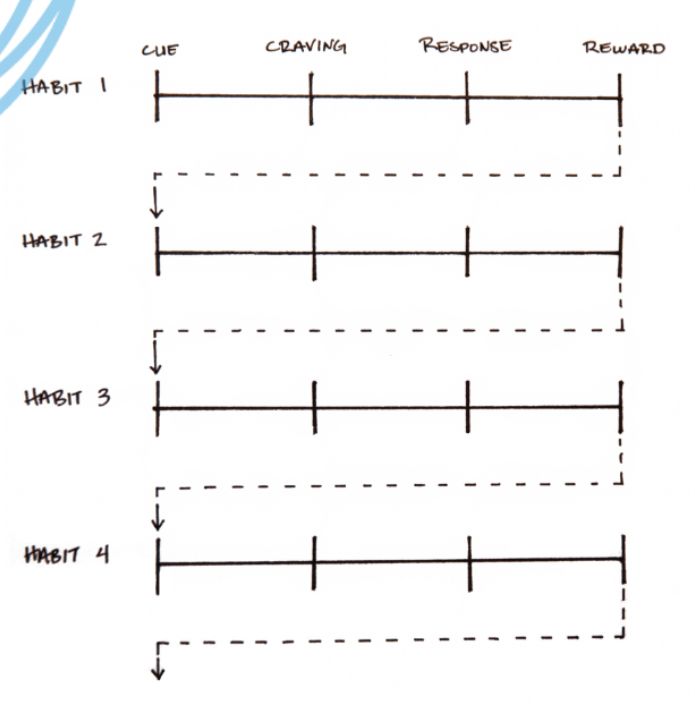
Again, the reason habit stacking works so well is that your current habits are already built into your brain. You have patterns and behaviors that have been strengthened over years. By linking your new habits to a cycle that is already built into your brain, you make it more likely that you’ll stick to the new behavior.
SLIDE x: BE-DO-GET
However, there is more to creating great habits. Let me explain.
The first layer is changing your outcomes. This level is concerned with changing your results: losing weight, publishing a book, winning a championship. Most of the goals you set are associated with this level of change.
The second layer is changing your process. This level is concerned with changing your habits and systems: implementing a new routine at the gym, decluttering your desk for better workflow, developing a meditation practice. Most of the habits you build are associated with this level.
The third and deepest layer is changing your identity. This level is concerned with changing your beliefs: your worldview, your self-image, your judgments about yourself and others. Most of the beliefs, assumptions, and biases you hold are associated with this level.
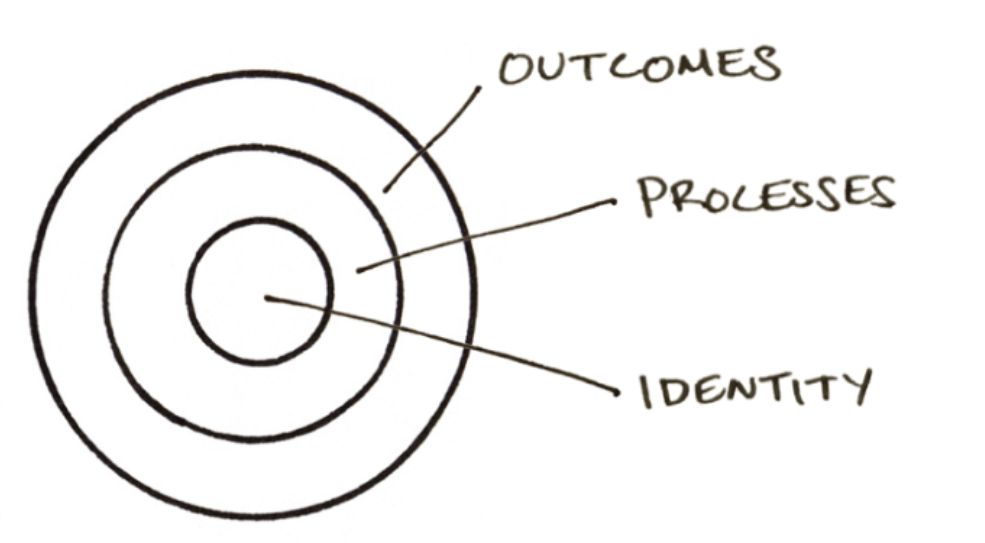
Changing your beliefs isn’t nearly as hard as you might think. There are two steps.
1. Decide the type of person you want to be.
2. Prove it to yourself with small wins.
Want to lose weight?
Identity: Become the type of person who moves more every day.
Small win: Buy a pedometer. Walk 50 steps when you get home from work. Tomorrow, walk 100 steps. The day after that, 150 steps. If you do this 5 days per week and add 50 steps each day, then by the end of the year, you’ll be walking over 10,000 steps per day.
Attachments
- Screenshot 2024-07-04 at 2.52.50 pm.png
- Screenshot 2024-07-04 at 2.51.37 pm.png
- Screenshot 2024-07-04 at 2.49.49 pm.png
- Screenshot 2024-06-19 at 8.39.00 pm.png
- Screenshot 2024-06-19 at 8.38.22 pm.png